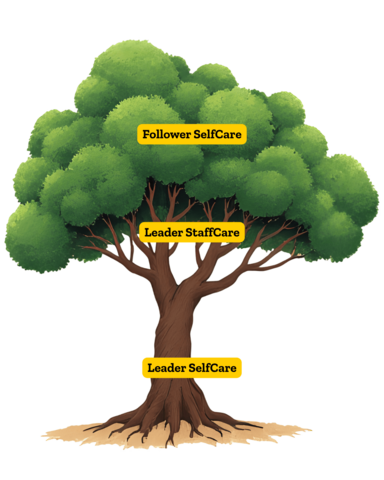“Are you a healthy leader?” may seem like a personal question—but it’s actually a systemic one.
Healthy leadership is more than a morning kettlebell training workout, recharging your batteries, or eating your leafy greens. It’s a new lens for viewing how we lead—one where health and well-being, rather than academic performance or productivity, guide how we shape environments where people feel safe, supported, and valued.
In K-12 education, we have been thinking in similar ways for a while (see ASCD’s Whole Child model and the Alliance for a Healthier Generation’s Healthiest Schools Award Program, among many other examples); however, the evidence base for healthy leadership interventions and skill development has been growing. While most of this research focuses on adults in corporate settings, it also sparks an important question for K-12 school administrators:
After years of burnout, attrition, and declining morale in education, what would it mean for us to redefine leadership success in terms of the health of the people we lead?
Leadership Reimagined: What is Different about Healthy Leadership?
Popular leadership styles you might have heard of or even practice include transformational leadership, servant leadership, and authentic leadership, among others. While these leadership styles are generally “others-focused” in inspiring higher work performance, they lack a deliberate focus on followers’ health and well-being.
Research overwhelmingly tells us that healthier and happier humans also perform better in the classroom or in the boardroom (Cropanzano & Wright, 2001). As a result, over a dozen healthy leadership frameworks have emerged worldwide (i.e., health-oriented leadership, health-promotion leadership, and health-specific leadership), all centering on the idea that leaders’ actions directly shape the well-being of their followers.
Instead of a key performance indicator (KPI)- or test score-first mindset, the philosophy and actions of healthy leaders enrich the subjective well-being of those around them.
The result is two-fold: personally, staff members thrive and professionally, they become more engaged in their work. It goes back to Theodore Roosevelt’s platitude: “People don’t care how much you know until they know how much you care.” I would extend this to say… “about their humanness.”
What is Health-Oriented Leadership (HoL)?
One of the most-studied models of healthy leadership, health-oriented leadership (HoL) (Franke et al., 2014), is a specific leadership concept that focuses on enhancing the health—not performance—outcomes of those you lead.

HoL reflects how employees perceive their leaders’ SelfCare habits and how much they feel those leaders genuinely care about their team’s health and well-being, a concept known as StaffCare.
Specifically, HoL considers a leader’s awareness of health indicators, the value they place on health and well-being, and specific actions taken to support health and well-being (Franke et al., 2014).
In the HoL model, healthy leadership begins with the leader’s SelfCare. When leaders prioritize their own well-being, they form a strong foundation for caring for others, like the roots and trunk of a tree. From there, StaffCare branches out. The branches represent the intentional health-focused actions of the leader that nurture the well-being of staff and students. These branches help others stay balanced, connected, and supported.
Over time, the tree blooms into a lush, full canopy, symbolizing followers inspired to practice well-being in their own lives. Together, this creates a thriving, resilient environment where everyone’s resources—such as energy, psychological safety, and self-efficacy—are replenished and sustained.
The Research Behind HoL
The research behind this health-forward approach is promising. Scholars have found that when leaders truly adopt a HoL mindset, the people they lead report better mental and physical health, a boosted sense of well-being, and more vigor (no extra pumpkin spice lattes, Red Bull, or Celsius needed). Not only do they experience less burnout, stress, and exhaustion, but they are also happier and find more meaning in their work.
When we center health and well-being as core leadership values, we cultivate stronger, more resilient school communities. Healthy leadership doesn’t replace performance. It sustains it.
In Part 2 of this blog series, Healthy Leadership Starts Here: 10 Practical Tips, we explore how to put healthy leadership into practice—starting with small but powerful changes in SelfCare and StaffCare.
References
Cropanzano, R., & Wright, T. A. (2001). When a "happy" worker is really a "productive" worker: A review and further refinement of the happy-productive worker thesis. Consulting Psychology Journal: Practice and Research, 53(3), 182–199. https://doi.org/10.1037/1061-4087.53.3.182
Franke, F., Felfe, J., & Pundt, A. (2014). The impact of health-oriented leadership on follower health: Development and test of a new instrument measuring health-promoting leadership. German Journal of Research in Human Resource Management, 28(1-2), 139-161. https://doi.org/10.1177/239700221402800108
Photo credit: Canva
